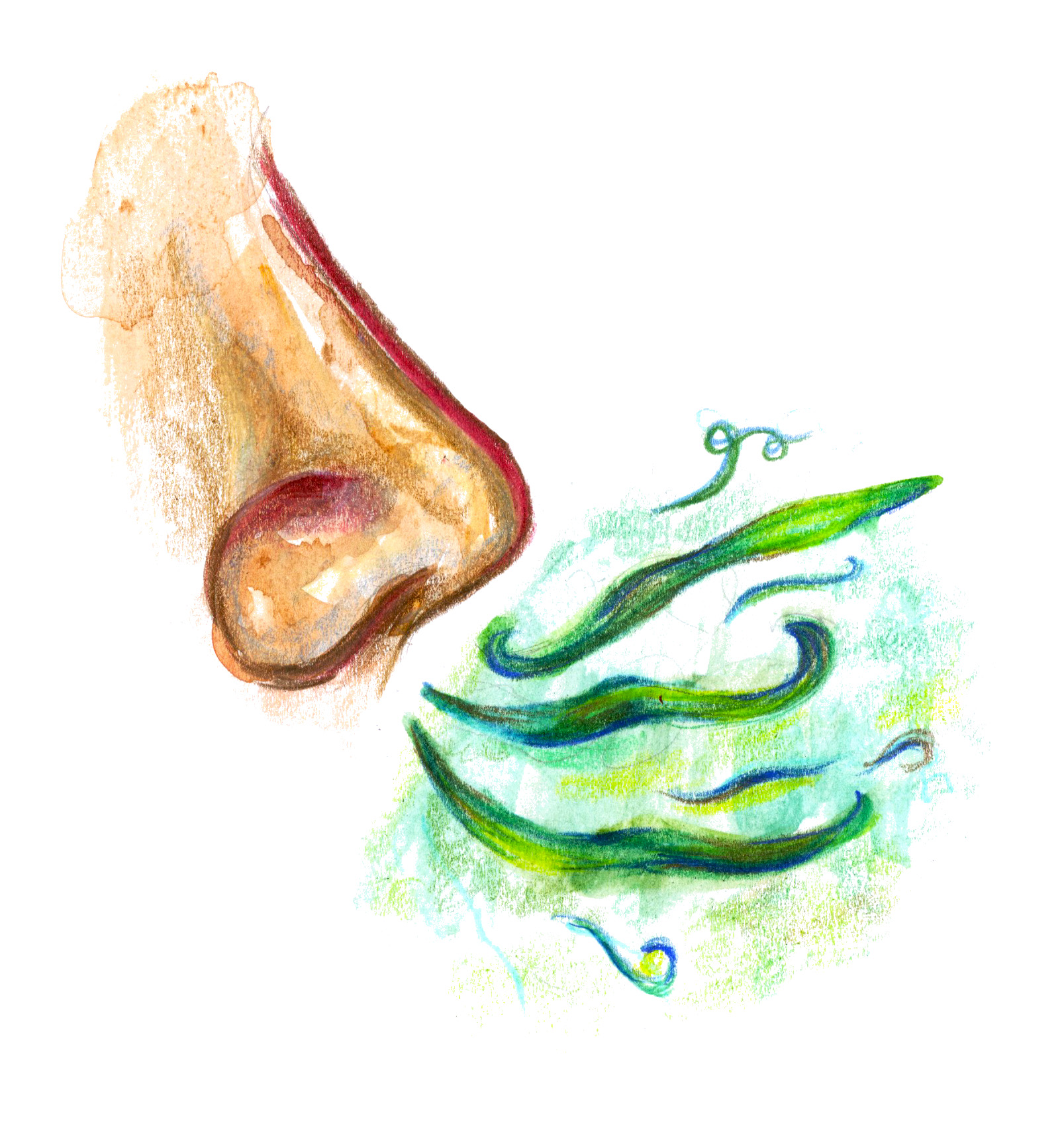
The ability to smell shapes our lives — we tie the scent of cookies in the oven to warm childhood memories or know to avoid an egg salad if it smells rotten. But despite the importance of this basic sense, little is known about how we actually detect odors. While scientists have long known that molecules enter our nose and interact with scent receptors, the results of a recent Yale-related study provide new insight into the molecular mechanisms of scent.
The study, published April 9 in the Proceedings of the National Academy of Sciences of the United States of America, looked specifically at how humans detect musk-smelling compounds, using a computer model developed by Yale scientists.
“The goal for the study was to elucidate some of the molecular mechanisms that underlie the transduction of the olfactory receptors,” said Nicholas Ten ’16, a co-author of the study who contributed to the research during his time as an undergraduate at Yale. He and other researchers targeted two olfactory receptors, the structures in our noses that allow us to smell.
Specifically, researchers targeted these receptors using musk-smelling compounds, Ten said.
While modeling the interactions of molecules to scent receptors may seem a trivial pursuit, in reality, it is anything but. Victor Batista, a Yale chemistry professor and one of the principal investigators, explained possible applications of the study, ranging from TNT detectors to better insect repellants.
Since ancient times, musk has been a prominent element in scent — perhaps you have seen a bottle of perfume or cologne described as musky. But in chemistry, the word musk pertains to a broader range of odorants, or molecules that carry scent. For instance, Batista noted that the TNT molecule closely resembles a musk. Thus, understanding how we detect TNT in our noses could lead to the development of a TNT sensor — something that does not yet exist.
Current insect repellants use smell to deter bugs, but knowledge of how their scent receptors actually function helps make a more effective spray, possibly tailored to individual species. Batista noted that targeting mosquitoes would be especially pertinent in areas concerned about Zika or malaria, which are spread by the pest. At the moment, though, scientists have no understanding of insects’ sense of smell, Batista said.
Lucky Ahmed, a postdoctoral researcher in the Department of Chemistry, was the first author listed in the paper. She said that another application of the study pertains to medicine. Musks have long been used in traditional Chinese medicine, she said, but science has yet to confirm or explain their curative benefits. Identifying how musks interact with our bodies would advance pharmaceutical knowledge and possibly lead to the creation of new drugs, she said.
Previous studies that tested the sense of smell used samples with contaminants, Batista said. The innovation of this particular study was the use of uncontaminated scent samples. Batista’s lab at Yale collaborated with groups at other universities — for instance, a scientist at the University of Albany prepared the high-purity musk samples, Batista said.
“That way, you know exactly what you have,” Batista said.
The Batista Lab’s role in the study was to model the molecules using computer software. The digital model employed detailed descriptions that could not be constructed using the basic ball-and-stick models of chemistry class, Batista said. The nuance provided by the digital format allowed Yale scientists to explore in detail the process of scent detection.
After observing and modeling the way that many musks interacted with the scent receptors, Yale scientists successfully predicted how other molecules would interact with the same receptors. Batista said this accurate prediction effectively corroborated their model.
The human nose can identify at least 1 trillion different odors, according to a 2014 article in Nature.
Jessica Pevner | jessica.pevner@yale.edu







